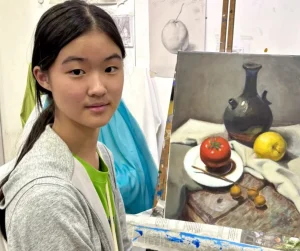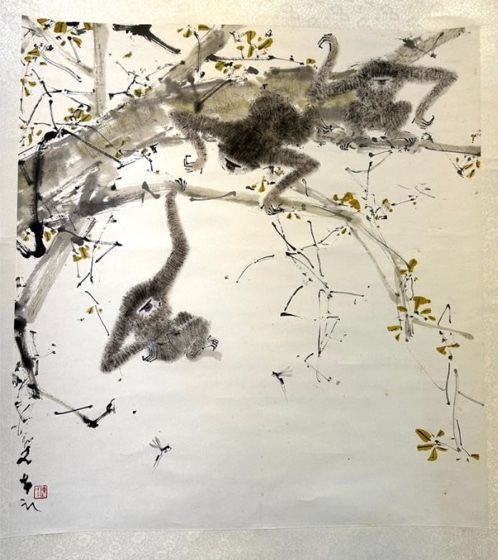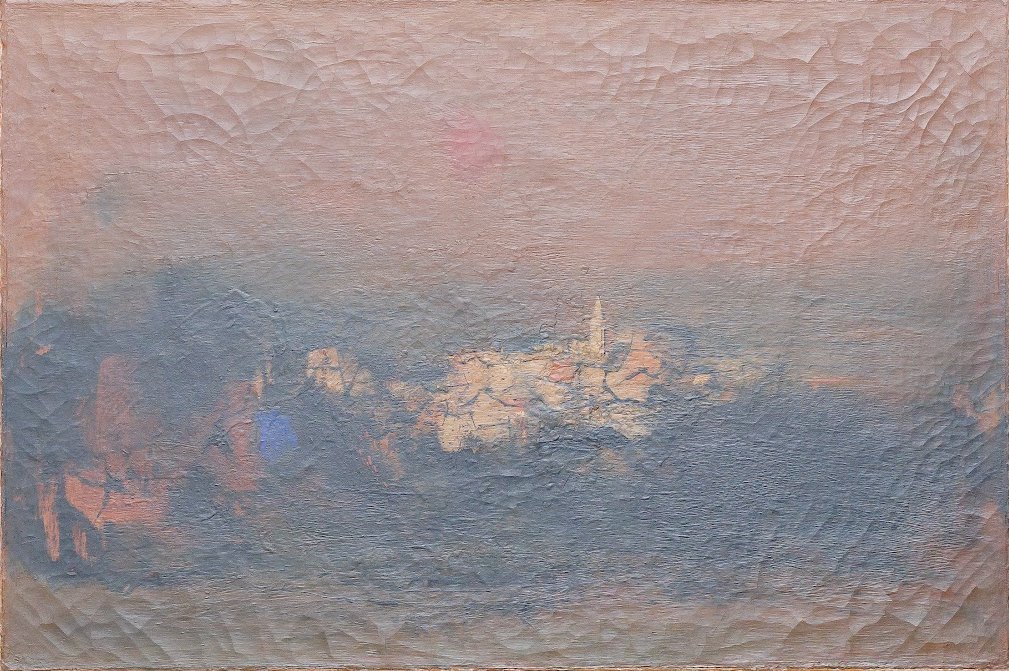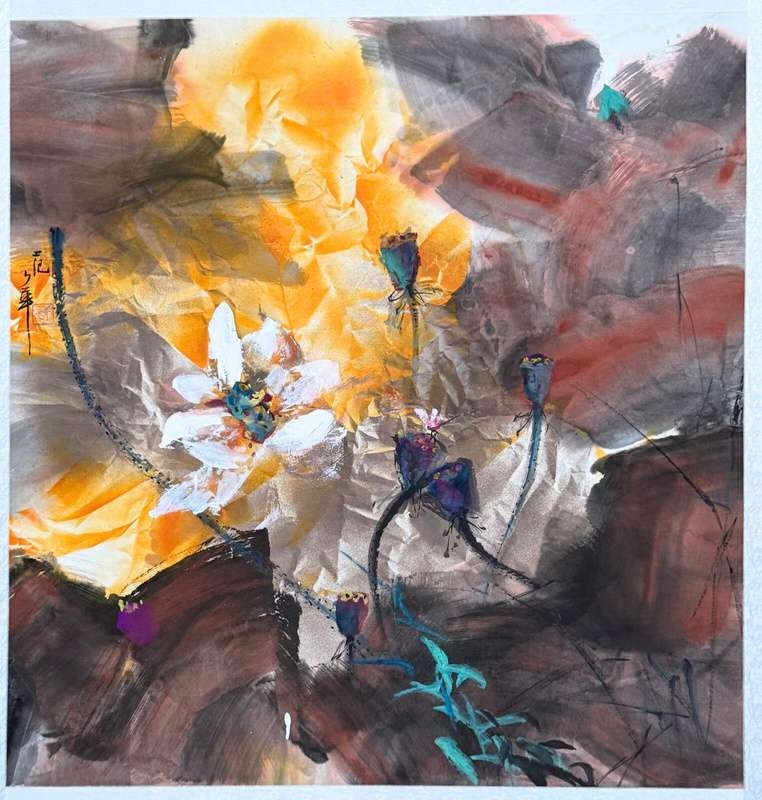Acrylic Painting on Canvas Team Bonding Art Jamming Singapore Visual Arts Centre
























Yeo Hoe Koon
Oil on Canvas
64 x 89.5 cm
Price Range: $16,000 - $20,000

Yeo Hoe Koon
Oil on Canvas
101 x 123 cm
Price Range: $26,000 - $32,000

Chen Wen Hsi
Chinese Ink and Color on Paper
50 x 54cm
Price Range: SGD $42,000 - $50,000

Cheong Soo Pieng
Red Tone
61 x 91.5cm
Price Range: SGD $108,000 - $138,000

Cheong Soo Pieng
Abstract Landscape
50 x 61cm
Price Range: SGD $95,000 -$128,000

Fan Shao Hua
Chinese Ink and Colour on Paper
100 x 100cm
Price Range: SGD $9,800 - $14,800

Fan Shao Hua
Chinese Ink and Colour on Paper
100 x 100cm
Price Range: SGD $8,800 - $13,800

Have you been captivated by a particular artwork when you’re visiting an art exhibition? Excellent artworks leaves a strong impression on the viewer and could be visually arresting. So, what makes a great art piece? There is no secret to being a good artist than a great deal of art practice, strong foundational art training and skills. A good artist possess a strong art foundation and skills and exposure to various art mediums, developed through long term professional art training in an art academy. A great artist is almost always an extremely diligent art student.

The learning and practice of the arts – dance, music, drama, art is synonymous in that it requires a lot of practice and training, and that the foundation of the arts practitioner is often crucial in determining the success of an arts career.

Undeniably, the foundation of fine art in academy practice is drawing and sketching. Why should we learn drawing and sketching? As it is the only way to practice and exercise our observational skills. From obtaining balance in portraying the posture of a figure, to the tonality of an object – it can all be resolved through the learning of drawing and sketching.
The main idea of fast drawing is in the use of lines to create a form. Aside from tonality drawing, why should we emphasise on fast drawing? Simply put, fast drawing is the key to how we can control the form of an artwork.

In certain instances, people who practice drawing and sketching tend to draw out what appears ahead of them almost in a literal manner. This results in the formation of a regular artwork with no depth. This form of drawing is not acceptable, and should be complemented by the skills required to do a fast drawing for an impressive artwork.



Fast drawing should not be considered as just an art technique on its own, but rather, as a foundation to drawing and sketching. Fast drawing enables one to be able to effectively express their creativity through a deepen understanding of the subject matter. As such, fast drawing should be classified as an ongoing endeavour that should not be forsaken. Even if one does not have an objective or plan in the creation process, we should still continuously work on experiencing life so as to deepen our observational skills and improve our hand-eye coordination. In the long run, this can further enhance our observational skills for the things that surround us, bringing our skills to new heights.
To learn drawing and sketching, one must first be exposed to still-life drawing, plaster cast of geometric shapes, plaster cast still-life and plaster cast portrait. Fast drawing is a way of how we can control the form of an artwork. It can be practiced through the drawing of trees, mountains, rivers and landscape followed by still-life, human figures and postures.
We have since opened a new studio at AZ @ Paya Lebar. There is no doubt that there are an abundant of places for children to learn drawing in the east – from Marine Parade, Simei, Tampines, Katong, Bedok to Joo Chiat. Once a child reaches the age of nine, and has learnt to express his / her creativity, it is then now time to expose them to professional art drawing and sketching courses to further hone the depth of their artwork.
Here in Visual Arts Centre, we provide the following professional art courses: drawing and sketching, fast sketching, oil painting, acrylic painting, watercolour painting, Chinese ink painting and portfolio preparatory workshop.



|
||||||||||||||||||||||||||||||||||||||||||
|
||||||||||||||||||||||||||||||||||||||||||||||||||||||||||||||||||||||


SAT |
10:30am - 12:45pm1pm - 3pm
|
SAT |
|
10:30am - 12:45pm1pm - 3pm
|
|




Address:
10 Penang Road, #01-02 Dhoby Ghaut Green,
Singapore 238469
Exit from Dhoby Ghaut MRT Station Exit B and turn left, we are there in 30m!

Address:
AZ@Paya Lebar, 140 Paya Lebar Road, #03-04,
Singapore 409105
Exit from Macpherson MRT Station Exit A and turn left, we are right across the road, 1 minute walk away!
Have any questions? Please drop us an enquiry form and we’ll respond to you as soon as we can!
"*" indicates required fields
How to learn the foundation of art? Have you been captivated by a particular artwork when you’re visiting an art exhibition? Excellent artworks leaves a strong impression on the viewer and could be visually arresting. So, what makes a great art piece? There is no secret to being a good artist than a great deal of art practice, strong foundational art training and skills. A good artist possess a strong art foundation and skills and exposure to various art mediums, developed through long term professional art training in an art academy. A great artist is almost always an extremely diligent art student.


Undeniably, the foundation of fine art in academy practice is drawing and sketching. Why should we learn drawing and sketching? As it is the only way to practice and exercise our observational skills. From obtaining balance in portraying the posture of a figure, to the tonality of an object – it can all be resolved through the learning of drawing and sketching.

In certain instances, people who practice drawing and sketching tend to draw out what appears ahead of them almost in a literal manner. This results in the formation of a regular artwork with no depth. This form of drawing is not acceptable, and should be complemented by the skills required to do a fast drawing for an impressive artwork.



Fast drawing should not be considered as just an art technique on its own, but rather, as a foundation to drawing and sketching. Fast drawing enables one to be able to effectively express their creativity through a deepen understanding of the subject matter. As such, fast drawing should be classified as an ongoing endeavour that should not be forsaken. Even if one does not have an objective or plan in the creation process, we should still continuously work on experiencing life so as to deepen our observational skills and improve our hand-eye coordination. In the long run, this can further enhance our observational skills for the things that surround us, bringing our skills to new heights.
To learn drawing and sketching, one must first be exposed to still-life drawing, plaster cast of geometric shapes, plaster cast still-life and plaster cast portrait. Fast drawing is a way of how we can control the form of an artwork. It can be practiced through the drawing of trees, mountains, rivers and landscape followed by still-life, human figures and postures.
Visual Arts Centre is located at city central area, just within Dhoby Ghaut Green and above Dhoby Ghaut MRT station Exit B. Students can choose to join our professional art courses at their preferred time slots as per their convenience.




|
||||||||||||||||||||||||||||||||||||||||||
|
||||||||||||||||||||||||||||||||||||||||||||||||||||||||||||||||||||||


SAT |
10:30am - 12:45pm1pm - 3pm
|
SAT |
|
10:30am - 12:45pm1pm - 3pm
|
|



For more details and enquiries, please contact us at:
Whatsapp or Call: 6255 0711
Email : info@visualartscentre.sg
Website: https://visualartscentre.sg
Embark on a captivating journey into the vibrant world of digital art! Our Foundation in Digital Art workshop invites budding creatives aged nine and above to unleash their imagination and hone their artistic skills in a dynamic, supportive environment. From mastering basic digital tools to crafting mesmerizing digital masterpieces, children will explore a spectrum of techniques guided by seasoned mentors. Through hands-on activities and interactive sessions, participants will discover the endless possibilities of digital expression while fostering creativity and critical thinking. Join us for an exhilarating adventure where young artists transform ideas into stunning visual realities, igniting a passion for digital art
In the Batik Introduction Handkerchief Painting workshop, participants will learn the traditional art of batik, a wax-resist dyeing technique originating from Indonesia. The workshop begins with a brief history and overview of batik, highlighting its cultural significance and various techniques. Participants will then observe a demonstration of applying wax with tjanting tools and dyeing the fabric. Following the demonstration, each participant will design and create their own batik handkerchief, applying wax to create patterns and then dyeing their fabric. The workshop concludes with a group discussion, allowing participants to share their creations and reflect on their learning experience.